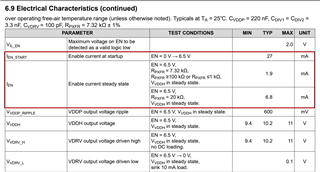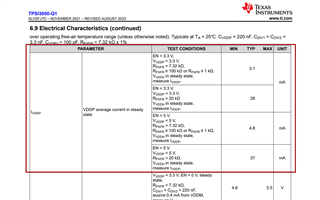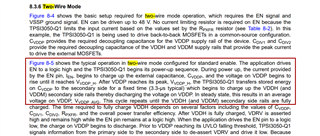Tool/software:
Dear TI Support Team,
I am currently working with the TPSI3050QDWZRQ1 and reviewing its datasheet. However, I could not find any information regarding the leakage current of the EN (Enable) pin when it is left floating or pulled to a logic level.
Could you please provide the typical and maximum leakage current specifications for the EN pin in of TPSI3050QDWZRQ1 operating in 2-wire & 3-wire mode over full operating temperature range i.e. -40 degC to +125 degC ?
Thank you for your support.
Best regards,
Manoj.




